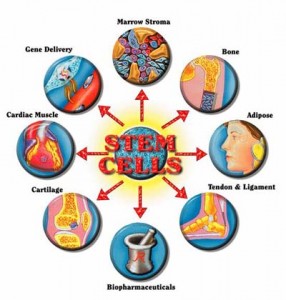One of the most frequent questions that I get asked is, “How can I slow down getting old?”
We begin to age at the moment of conception. Thus, the overarching approach to healthy aging should actually begin prenatally and continue with post-partum nutrition and developing lifestyle factors in childhood and adolescence. In reality, concepts that support wellness and longevity are not often embraced until a chronic health problem develops. At that point, healthcare options diverge between the “medicine” of applied physiology or applied pharmacology.
Anti-aging, restorative, or regenerative medicine approaches focus on healthy aging and seek to influence and re-establish normal physiology using various modalities. This area of medicine recognizes many underlying factors that are necessary for the body to generate new cells and keep them functioning properly, such as cellular pH and voltage, cell membrane integrity, and oxygen availability.
Causes of Ageing
Investigations into the exact causes of aging have led to theories of aging. Currently there are three main hypotheses:
- telomere shortening
- mitochondrial dysfunction
- loss of stem cell activity
Telemores
![telomere[1]](http://truemedicine.com.au/wp-content/uploads/telomere1-300x276.jpg) On the cellular level, senescence, chromosome stability, and cell viability are regulated by telomeres and their accompanying DNA-protein complexes, located at both ends of the chromosomes. Shortening of the telomeres has been shown to be associated with increased mortality from age-related diseases.
On the cellular level, senescence, chromosome stability, and cell viability are regulated by telomeres and their accompanying DNA-protein complexes, located at both ends of the chromosomes. Shortening of the telomeres has been shown to be associated with increased mortality from age-related diseases.
In fact, individuals with shorter telomeres suffered a mortality rate nearly twice that of those with longer telomeres. A decrease in telomerase, the critical enzyme that protects the telomeres and extends lifespan, has been shown to precede telomere shortening. Studies support the fact that nitric oxide (NO) is the master signalling molecule in the regulation of telomerase activity (thereby inhibiting telomere shortening) and that lost regulation of telomerase activity can be rescued (restored) by exogenous NO donors.
Mitochondria
Mitochondria, the generators of cellular energy, are critical to the aging process and mitochondrial dysfunction is implicated in many human diseases. Nitric oxide safeguards energy production through mitochondrial regulation of:
ATP synthesis, cell signalling, production of reactive oxygen species (ROS), apoptosis, metabolism and bioenergetics, and even the number of mitochondria in the cell via NO stimulation of mitochondrial biogenesis. Furthermore, in hypoxic states, available nitrite in tissue stores can be reduced to NO, which then modulates oxygen consumption and oxygen gradients while decreasing ROS generation. These NO regulatory events along the electron transport chain improve exercise efficiency and confer cytoprotection, particularly after ischemia/ reperfusion (I/R).
Stem Cells 
Stem cells are recognised as important candidates for present and future clinical applications in restorative medicine; however, the success of stem cell therapies depends on the homing and survival of these cells in the recipient. Inter-cellular communication must work optimally if new stem cells are to be programmed to function correctly within their new tissue.
Natural medicine offers many avenues to support cellular health, cell signalling and overall tissue regeneration. Consult a qualified natural health practitioner and never self-prescribe or search on line for supplements that may not be suitable for you.
Call True Medicine on 07 5530 1863 for a personalised health assessment.
Sources: Mujoo K, et al. PNAS. 2008;105(48):18924-29. Gibran A, et al. J. Translational Med. 2012;10:75. Kanki-Horimoto S, et al. Circulation. 2006;114:I-181-I-185. Courtesy FX-Med New Zealand

